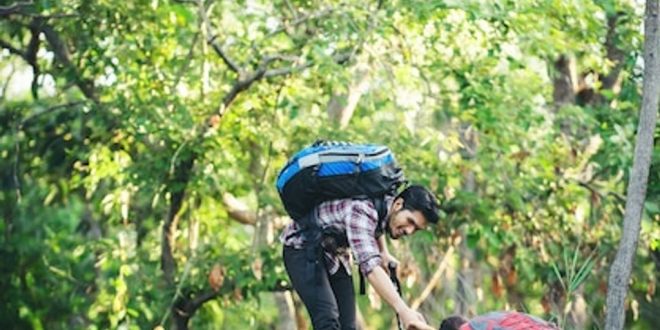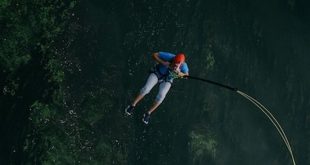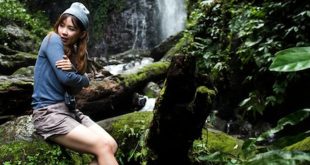Introduction
Embark on an unforgettable adventure with Hiking and Trekking in Indonesia, a paradise for nature enthusiasts and thrill-seekers alike. This archipelago of over 17,000 islands offers diverse landscapes, ranging from lush rainforests and active volcanoes to pristine beaches and rolling hills, providing an unparalleled backdrop for exploration. Whether you’re a seasoned trekker or a beginner eager to venture into the world of hiking, Indonesia promises a wealth of trails that cater to all skill levels.
In this article, we delve into the top hiking trails that Indonesia has to offer, guiding you through the preparation essentials to ensure a safe and enjoyable experience. From selecting the right gear to understanding the local terrain, you’ll be well-equipped to embark on your journey. Moreover, we’ll explore the importance of embracing sustainable practices to preserve Indonesia’s natural beauty for future generations.
Join us as we uncover the hidden gems of Indonesia’s hiking trails and provide actionable insights to enhance your outdoor adventures. By the end of this article, you’ll be inspired and prepared to lace up your boots and discover the wonders of Indonesia’s breathtaking landscapes. Let’s take the first step on this exciting journey together!
Introduction to Hiking and Trekking in Indonesia
Why Indonesia is a Top Destination for Hikers
Indonesia, an archipelago of over 17,000 islands, offers a diverse range of landscapes that make it a top destination for hikers and trekkers from around the world. From volcanic peaks to lush rainforests, Indonesia provides an unparalleled variety of terrains that cater to both novice hikers and seasoned adventure travelers.
One of the key reasons why Indonesia stands out is its rich biodiversity. The country’s location along the equatorial line means that it boasts a tropical climate with a vast array of flora and fauna. Hikers can explore dense jungles teeming with wildlife, discover stunning waterfalls, and witness rare bird species, all while traversing various trekking routes in Indonesia. The unique ecosystems found in places like Sumatra and Borneo offer eco-tourists a chance to engage with nature responsibly and sustainably.
Moreover, Indonesia’s cultural richness enhances the hiking experience. Many trails pass through traditional villages, allowing hikers to immerse themselves in local customs and traditions. This cultural interaction adds depth to the adventure hiking Indonesia offers, making it more than just a physical journey.
Practical Tips:
- Preparation: Ensure you have the appropriate gear for the climate and terrain. Lightweight, breathable clothing and sturdy hiking boots are essential.
- Permits and Guides: Some areas require permits, and hiring a local guide can enrich the experience with insights into the region’s culture and history.
- Sustainability: Practice the Leave No Trace Principles to minimize your environmental impact.
Overview of Popular Hiking Regions
Indonesia’s diverse geography presents a multitude of hiking regions, each with its unique challenges and rewards. Here are some of the most popular regions that attract hiking enthusiasts and eco-tourists alike:
- Bali: Known for its scenic rice terraces and volcanic landscapes, Bali offers trails that range from leisurely walks to challenging climbs. Mount Batur, an active volcano, provides one of the best treks in Indonesia with stunning sunrise views. Explore more about Bali as a destination here.
- Java: Home to the majestic Mount Bromo and Mount Semeru, Java is a hotspot for adventure hiking Indonesia is famous for. These volcanic landscapes offer both breathtaking beauty and a glimpse into the geological forces shaping the region.
- Sumatra: The island is renowned for its rainforests and wildlife, including the critically endangered Sumatran orangutan. The Bukit Lawang trek is popular among eco-tourists seeking to explore Indonesia hiking trails while supporting conservation efforts.
- Lombok: Mount Rinjani, an active volcano, is one of the most sought-after trekking routes Indonesia offers. The challenging ascent rewards hikers with a view of a stunning crater lake.
- Sulawesi: Known for its rugged landscapes and cultural diversity, Sulawesi’s trails often pass through traditional villages, providing a unique cultural hiking experience.
Actionable Advice:
- Research: Before selecting a trail, research the difficulty level and required fitness. Some trails are suitable for all skill levels, while others demand advanced trekking skills.
- Weather: Consider the season and weather conditions, as Indonesia’s tropical climate can affect trail accessibility.
- Local Interaction: Engage with local communities and support eco-friendly initiatives. This not only enriches your experience but also contributes to sustainable tourism practices.
For more information on Indonesia’s hiking destinations and planning your adventure, visit the Indonesia Tourism Official Site.
By exploring these top hiking trails, understanding preparation needs, and embracing sustainable practices, adventure travelers, hiking enthusiasts, and eco-tourists can fully enjoy the natural wonders that Hiking and Trekking in Indonesia have to offer.
Top Hiking Trails in Indonesia
Indonesia is a treasure trove of hiking opportunities, with landscapes ranging from volcanic peaks to lush jungles. Whether you’re an adventure traveler, a hiking enthusiast, or an eco-tourist, Indonesia offers some of the most breathtaking trekking routes. This guide explores the top hiking trails in Indonesia, focusing on Mount Rinjani in Lombok, Mount Bromo in East Java, and Mount Batur in Bali. Here, we provide practical tips for exploring these trails, understanding preparation needs, and embracing sustainable practices.
Mount Rinjani, Lombok
Mount Rinjani, standing at 3,726 meters, is the second-highest volcano in Indonesia and a highlight of Indonesia hiking trails. The trek is renowned for its challenging routes and spectacular views, including the stunning Segara Anak crater lake.
Practical Tips:
- Preparation Needs: This trek is demanding, typically taking 2-3 days. Adequate preparation is crucial. Ensure you have sturdy hiking boots, layered clothing, and sufficient water.
- Guided Tours: Hiring a local guide is recommended for safety and to enhance your experience with insights into the natural and cultural significance of the area.
- Permits and Fees: Obtain necessary permits at the Rinjani Trek Center and be prepared to pay conservation fees.
Sustainable Practices:
- Leave No Trace: Follow the Leave No Trace Principles to minimize your impact. Carry out all trash, stay on marked trails, and respect wildlife.
- Local Economy: Support the local economy by using local guides and accommodations.
Mount Bromo, East Java
Mount Bromo, part of the Bromo Tengger Semeru National Park, offers one of the most popular trekking routes in Indonesia. The sunrise view over the caldera is a must-see, making it a prime destination for adventure hiking Indonesia.
Practical Tips:
- Best Time to Visit: The dry season, from April to October, is ideal for hiking. Plan to reach the viewpoint early to capture the sunrise.
- Access Points: The trek usually starts from the village of Cemoro Lawang. A jeep ride can take you closer to the base, with an easy walk to the summit.
- Gear: Bring warm clothing, as temperatures can be chilly, especially at dawn.
Sustainable Practices:
- Park Regulations: Adhere to park regulations to protect this unique environment. Respect the tranquility of the area and avoid making noise.
- Community Engagement: Engage with local communities to learn about their culture and traditions.
Mount Batur, Bali
Mount Batur is an active volcano in Bali, offering one of the best treks in Indonesia. The trek is relatively short and is perfect for those with limited time but seeking an exhilarating outdoor activity.
Practical Tips:
- Trek Duration: The hike to the summit takes about 2-3 hours. Plan to start early to witness the breathtaking sunrise.
- Guides: While the trail is well-marked, hiring a guide can enrich your experience with stories and local knowledge.
- Fitness Level: Suitable for most fitness levels, but be prepared for a steep ascent.
Sustainable Practices:
- Environmental Care: Stick to designated paths to preserve the delicate volcanic landscape.
- Local Interaction: Purchase goods and services from local vendors to support the community.
By exploring these top hiking trails in Indonesia, adventure travelers, hiking enthusiasts, and eco-tourists can experience the country’s natural beauty while practicing responsible and sustainable tourism. Always remember to prioritize safety, preparation, and conservation to ensure a rewarding hiking experience. For more information on hiking and trekking in Indonesia, visit the Indonesia Tourism Official Site.
Preparation and Gear for Indonesian Treks
Exploring the vast array of Indonesia’s hiking and trekking trails offers an adventure like no other. From the challenging peaks of Mount Rinjani to the serene paths of Bali’s rice terraces, the country’s diverse landscapes provide endless opportunities for adventure hiking. For eco-tourists and hiking enthusiasts aiming to enjoy Indonesia’s natural beauty while embracing sustainable practices, understanding the essential preparation and gear is crucial.
Essential Gear for Hiking
To embark on the best treks in Indonesia, having the right gear is essential. Here’s a list of what every adventurer should consider:
- Footwear: A sturdy pair of hiking boots with good ankle support is a must for Indonesia hiking trails. Given the variety of terrains, from volcanic rocks to muddy rainforest paths, waterproof boots are recommended.
- Backpack: A comfortable and durable backpack, ideally 20-30 liters, is suitable for day treks. Ensure it has a rain cover to protect your belongings during unexpected rain showers.
- Clothing: Lightweight, moisture-wicking clothes are ideal for the humid climate. Long sleeves and pants can protect against sunburn and insects. Consider packing a light jacket for cooler high-altitude trekking routes in Indonesia.
- Navigation Tools: A map and compass or a GPS device are crucial for exploring lesser-known trekking routes Indonesia offers. Although many trails are well-marked, having a navigation tool ensures you stay on track.
- Hydration System: Carry at least 2 liters of water, and consider a portable water filter or purification tablets if you plan on refilling from natural sources.
- First Aid Kit: A basic kit including band-aids, antiseptic wipes, and any personal medications is essential for adventure hiking Indonesia.
- Sunscreen and Insect Repellent: Protect yourself from the sun and tropical insects by applying these regularly.
- Sustainable Gear: Embrace eco-friendly practices by using reusable water bottles, biodegradable soap, and eco-friendly camping gear. Refer to the Leave No Trace Principles for more sustainable hiking tips.
Weather Considerations
Indonesia’s climate can vary significantly depending on the region and elevation, making weather considerations a key part of preparation for outdoor activities Indonesia.
- Tropical Climate: Indonesia experiences a tropical climate with two main seasons: the dry season (May to September) and the rainy season (October to April). The dry season is generally the best time for trekking, as trails are less muddy and more accessible.
- Humidity and Heat: Prepare for high humidity and temperatures, particularly in lowland areas. Stay hydrated and wear lightweight clothing.
- Rainfall: Even in the dry season, sudden rain showers can occur, especially in rainforest regions. A lightweight rain jacket or poncho is essential.
- Altitude Variations: High-altitude trails, such as those on Mount Rinjani or Mount Bromo, can experience cooler temperatures. Pack layers to adjust to these conditions.
- Weather Forecast: Always check the local weather forecast before heading out. The Indonesia Tourism Official Site can provide valuable insights and updates on current conditions in popular trekking areas.
For those ready to explore Indonesia’s top hiking trails, such as those found on Bali: Indonesia’s Top Destination, being well-prepared with the appropriate gear and an understanding of weather conditions is crucial for a safe and enjoyable trekking experience.
Safety Tips for Hiking in Indonesia
Hiking and trekking in Indonesia offer unparalleled opportunities to explore diverse landscapes, from lush rainforests to volcanic peaks. Adventure travelers, hiking enthusiasts, and eco-tourists are drawn to Indonesia’s hiking trails for their natural beauty and challenge. However, understanding the local wildlife and being prepared for emergencies are crucial for a safe and enjoyable experience.
Understanding Local Wildlife
Indonesia’s vast and diverse ecosystems host a range of wildlife, some of which require cautious interaction. Whether you’re on the best treks in Indonesia or exploring lesser-known trekking routes, knowledge of local fauna is vital.
- Recognize Key Species: Familiarize yourself with the wildlife you might encounter. For instance, Indonesia is home to the infamous Komodo dragon, various species of snakes, and a multitude of insects. Understanding their habits can prevent unwanted encounters.
- Insect Precautions: Mosquitoes can be a nuisance and carry diseases like dengue fever and malaria. Use insect repellent and wear long sleeves and pants, especially in dense forest areas.
- Safe Distances: Maintain a safe distance from all wildlife. Animals may feel threatened if you approach too closely, leading to defensive behavior. For instance, if hiking around the Komodo National Park, always be accompanied by a guide who can ensure safety around the dragons.
- Avoid Feeding Wildlife: Feeding animals can disrupt their natural foraging habits and create dependency on human food. It can also increase the risk of aggressive encounters.
For more information on Indonesia’s wildlife, visit the Indonesia Tourism Official Site.
Emergency Contacts and Procedures
Being prepared for emergencies is a crucial part of adventure hiking in Indonesia. Whether you’re tackling Indonesia hiking trails or enjoying outdoor activities Indonesia offers, knowing what to do in case of an emergency is essential.
- Local Emergency Numbers: Always have local emergency numbers saved on your phone. The national emergency number is 112. Additionally, the local tourist police and park rangers can assist in emergencies within national parks and hiking areas.
- Guided Tours: Consider joining guided tours, especially if you’re unfamiliar with the trekking routes Indonesia offers. Guides are trained to handle emergencies and can provide valuable insights into the terrain and local conditions.
- First Aid Kit: Carry a basic first aid kit, including bandages, antiseptic wipes, a snake bite kit, and personal medications. Knowing basic first aid, especially for sprains, cuts, and bites, is beneficial.
- Communication Devices: Mobile reception can be unreliable in remote areas. Carry a satellite phone or a personal locator beacon (PLB) for communication in emergencies.
- Emergency Procedures: Familiarize yourself with the procedures for natural disasters like earthquakes or volcanic eruptions, common in Indonesia. Know the evacuation routes and follow local authorities’ guidance.
For sustainable hiking practices, refer to the Leave No Trace Principles.
Whether exploring the famous trails of Bali: Indonesia’s Top Destination or venturing into new territories, being prepared with these safety tips will help ensure a responsible and rewarding hiking experience in Indonesia.
Sustainable Hiking Practices
Embarking on Hiking and Trekking in Indonesia is a thrilling way to explore the country’s stunning landscapes and diverse ecosystems. For adventure travelers, hiking enthusiasts, and eco-tourists, understanding sustainable hiking practices is crucial to minimizing environmental impact and supporting local communities. This guide will delve into two essential aspects of sustainable hiking: Leave No Trace Principles and Supporting Local Communities.
Leave No Trace Principles
The Leave No Trace Principles(https://lnt.org/) serve as a foundational guideline for anyone engaging in outdoor activities, including Indonesia hiking trails. These principles help maintain the natural beauty of hiking environments, ensuring they remain pristine for future generations. Here’s how you can incorporate these principles while exploring trekking routes Indonesia:
- Plan Ahead and Prepare: Before setting out, research the specific trail conditions, weather forecasts, and regulations. Preparation enhances safety and reduces the likelihood of unintended environmental impacts.
- Travel and Camp on Durable Surfaces: Stick to established trails and campsites to prevent soil erosion and vegetation damage. In popular spots like Bali: Indonesia’s Top Destination(https://lokasiku.my.id/bali-indonesia-top-destination/), adhering to designated paths is crucial.
- Dispose of Waste Properly: Carry out all trash, leftover food, and litter. Utilize biodegradable products and pack out anything you bring in.
- Leave What You Find: Preserve the past by not altering historical structures or removing natural artifacts. This ensures that best treks in Indonesia remain unchanged for others to enjoy.
- Minimize Campfire Impact: Use a lightweight stove for cooking and enjoy a small campfire only in established fire rings where permitted.
- Respect Wildlife: Observe animals from a distance and never feed them. Protecting their natural behavior is vital for the ecosystem.
- Be Considerate of Other Visitors: Maintain tranquility and respect the experience of others by keeping noise levels low and yielding to other hikers when necessary.
For more information, visit the Leave No Trace Principles(https://lnt.org/).
Supporting Local Communities
Sustainable hiking in Indonesia isn’t just about preserving nature; it’s also about enriching and empowering local communities. Here are several practical ways to support these communities while enjoying adventure hiking Indonesia:
- Engage with Local Guides: Hiring local guides not only enhances your experience with their insights into the terrain and culture but also supports the local economy. Many outdoor activities Indonesia offer guided tours that are both educational and beneficial to the community.
- Purchase Locally-Made Goods: Buy souvenirs, snacks, and gear from local vendors to help sustain their businesses. This practice fosters economic resilience in the regions surrounding popular trekking routes Indonesia.
- Stay in Eco-friendly Accommodations: Choose lodgings that prioritize sustainability and community involvement. These accommodations often employ locals and use environmentally-friendly practices.
- Participate in Community-Based Tourism Initiatives: Engage in tourism activities that are designed and managed by local communities. These initiatives offer authentic experiences and ensure that the benefits of tourism are distributed equitably.
- Respect Cultural Norms and Traditions: Understanding and respecting local customs enhances cultural exchange and shows appreciation for the communities you visit.
By integrating these practices, adventure travelers, hiking enthusiasts, and eco-tourists can enjoy Hiking and Trekking in Indonesia while contributing to the conservation of its natural and cultural heritage. For more insights, visit the Indonesia Tourism Official Site(https://www.indonesia.travel/).
Conclusion and Additional Resources
Planning Your Hiking Adventure
Embarking on a hiking and trekking adventure in Indonesia can be an exhilarating experience, given its breathtaking landscapes and diverse ecosystems. To ensure a successful and enjoyable journey, planning is key. Here’s a guide with practical tips and insights tailored for adventure travelers, hiking enthusiasts, and eco-tourists.
- Research Indonesia Hiking Trails: Begin by identifying trails that match your experience level and interests. Consider some of the best treks in Indonesia, like Mount Rinjani in Lombok or the rugged beauty of the Baliem Valley in Papua. Explore the Indonesia Tourism Official Site for comprehensive information on popular hiking destinations.
- Assess Trekking Routes in Indonesia: Each trekking route has unique challenges and attractions. For instance, the Bromo Tengger Semeru National Park offers spectacular volcanic landscapes, while the jungles of Kalimantan provide a chance to encounter rare wildlife. Evaluate the duration, difficulty, and seasonal weather patterns of each trail.
- Gear and Preparation: Proper gear is essential for adventure hiking in Indonesia. Invest in quality hiking boots, breathable clothing, and a reliable backpack. Don’t forget essentials like a first-aid kit, water purification tablets, and a map. Local outfitters can offer rental equipment and guided tours, which are beneficial for unfamiliar routes.
- Sustainable Practices: Embrace sustainable hiking practices to minimize your environmental impact. Follow the Leave No Trace Principles to protect Indonesia’s pristine landscapes. This includes staying on marked trails, packing out all waste, and respecting wildlife.
- Health and Safety Precautions: Vaccinations, travel insurance, and emergency contacts are crucial components of your adventure plan. Be aware of altitude sickness on higher treks and equip yourself with a local SIM card for communication.
By following these steps, you can enjoy Indonesia’s outdoor activities while preserving its natural beauty for future generations.
Further Reading and Links
For a deeper understanding of hiking and trekking in Indonesia, consider exploring the following resources:
- Books and Guides: “Indonesia: Lonely Planet Travel Guide” provides detailed insights into the country’s top hiking destinations, including maps and local tips.
- Online Articles and Blogs: Websites like Indonesia Tourism Official Site and travel blogs offer current information on trekking routes and adventure hiking in Indonesia.
- Community Forums: Engage with fellow hikers on platforms like Reddit or Lonely Planet’s Thorn Tree Forum to share experiences and gather practical advice.
- Local Tours and Workshops: Participate in guided treks or workshops offered by conservation groups to learn more about sustainable hiking practices.
For those planning a visit to Bali, don’t miss our internal guide on Bali: Indonesia’s Top Destination for additional inspiration.
These resources offer valuable knowledge and insights, helping you prepare for a memorable hiking adventure in Indonesia’s diverse landscapes.
FAQ
What are the best hiking trails in Indonesia?
Indonesia is a hiker’s paradise, offering a diverse range of trails that cater to different levels of experience. Some of the best hiking trails include:
- Mount Rinjani, Lombok: This is a challenging yet rewarding trek, offering stunning views of the crater lake and surrounding landscapes. The trek typically takes 2-3 days.
- Mount Bromo, East Java: Known for its breathtaking sunrise views, this easier trek is perfect for beginners and can be completed in a few hours.
- Mount Batur, Bali: A popular sunrise trek, Mount Batur offers relatively easy terrain, suitable for beginners, and provides stunning views of the caldera.
- Kawah Ijen, East Java: Famous for its blue fire phenomenon, this trek is moderately challenging and is best done at night to witness the natural spectacle.
- Wae Rebo Village, Flores: This cultural trek through lush forests leads to a traditional Manggarai village, offering insights into local life and traditions.
- Bukit Lawang, Sumatra: Known for its orangutan sightings, this trek through the Gunung Leuser National Park offers a unique wildlife experience.
Each of these trails offers its own unique experiences and challenges, making Indonesia a premier destination for hiking enthusiasts.
How to prepare for trekking in Indonesia?
Preparing for trekking in Indonesia requires thoughtful planning to ensure a safe and enjoyable experience. Here are some practical tips:
- Research the Trail: Understand the difficulty level, duration, and climate conditions of your chosen trail. This will help you pack appropriately and set realistic expectations.
- Physical Fitness: Engage in regular physical activity to build stamina and strength. Include cardio exercises and strength training in your routine.
- Gear and Equipment: Invest in good quality hiking boots, a backpack, rain gear, and a hat. Don’t forget essentials like a first aid kit, water bottles, and snacks.
- Guides and Permits: Some trails, especially in national parks, require permits and are best navigated with a local guide who can enhance your safety and experience.
- Acclimatization: For high-altitude treks like Mount Rinjani, spend a day or two in the area to acclimatize to the altitude.
- Weather Conditions: Check the weather forecast before your trek and be prepared for rapid changes. The dry season (April to October) is generally the best time for trekking.
By preparing adequately, you’ll be better equipped to handle the challenges of trekking in Indonesia and fully enjoy the natural beauty the trails have to offer.
What are the safety tips for hiking in Indonesia?
Safety is paramount when hiking in Indonesia’s diverse landscapes. Here are some essential safety tips:
- Stay on Marked Trails: Always follow designated paths to avoid getting lost and to minimize environmental impact.
- Inform Others of Your Plans: Let someone know your trekking itinerary and expected return time.
- Hydration and Nutrition: Carry enough water and high-energy snacks to keep you hydrated and fueled throughout the trek.
- Weather Awareness: Be alert to changing weather conditions and be prepared to turn back if necessary.
- Wildlife Caution: Be aware of wildlife and maintain a safe distance. In areas like Bukit Lawang, follow guidelines to avoid disturbing orangutans.
- Appropriate Clothing: Wear layered clothing suitable for the climate and terrain. A waterproof jacket can protect against unexpected rain.
- Emergency Preparedness: Know basic first aid and carry a fully stocked first aid kit. Have emergency contact numbers readily available.
By adhering to these safety tips, you can help ensure a safe and enjoyable hiking experience in Indonesia’s stunning natural environments.
 Lokasiku Your reference for travel in Indonesia
Lokasiku Your reference for travel in Indonesia


